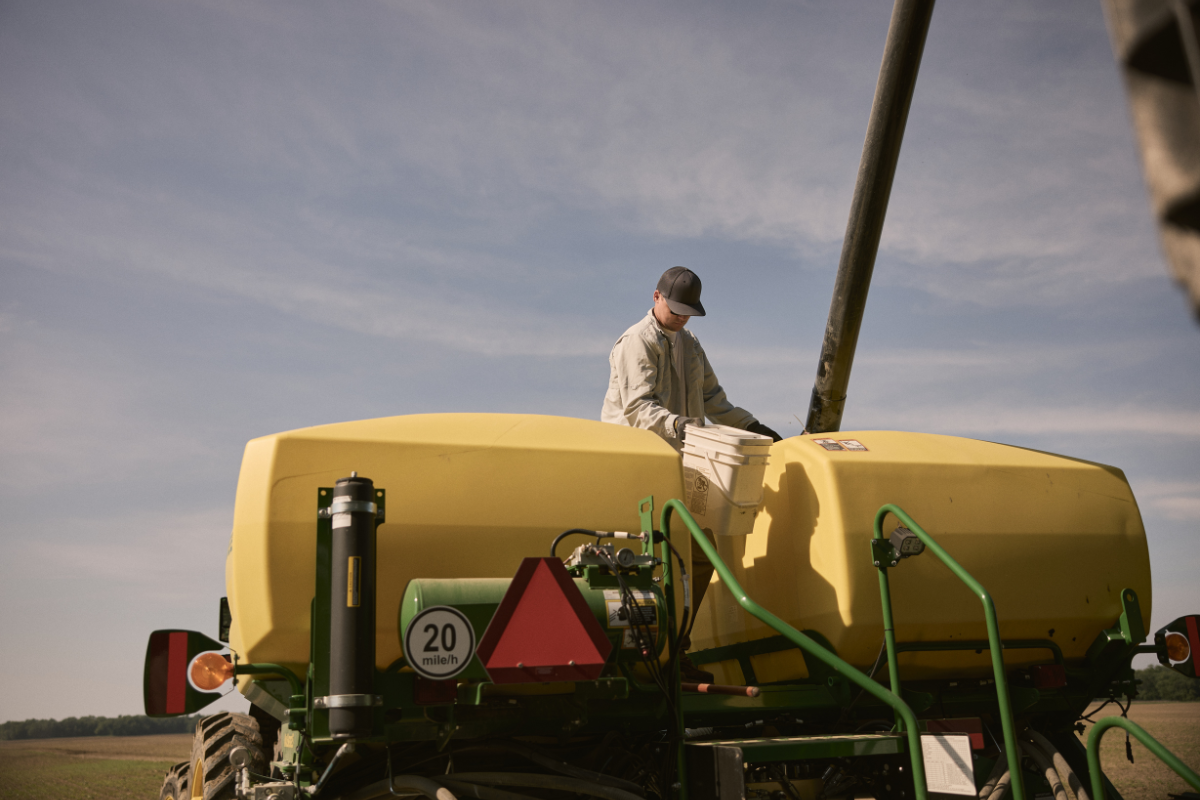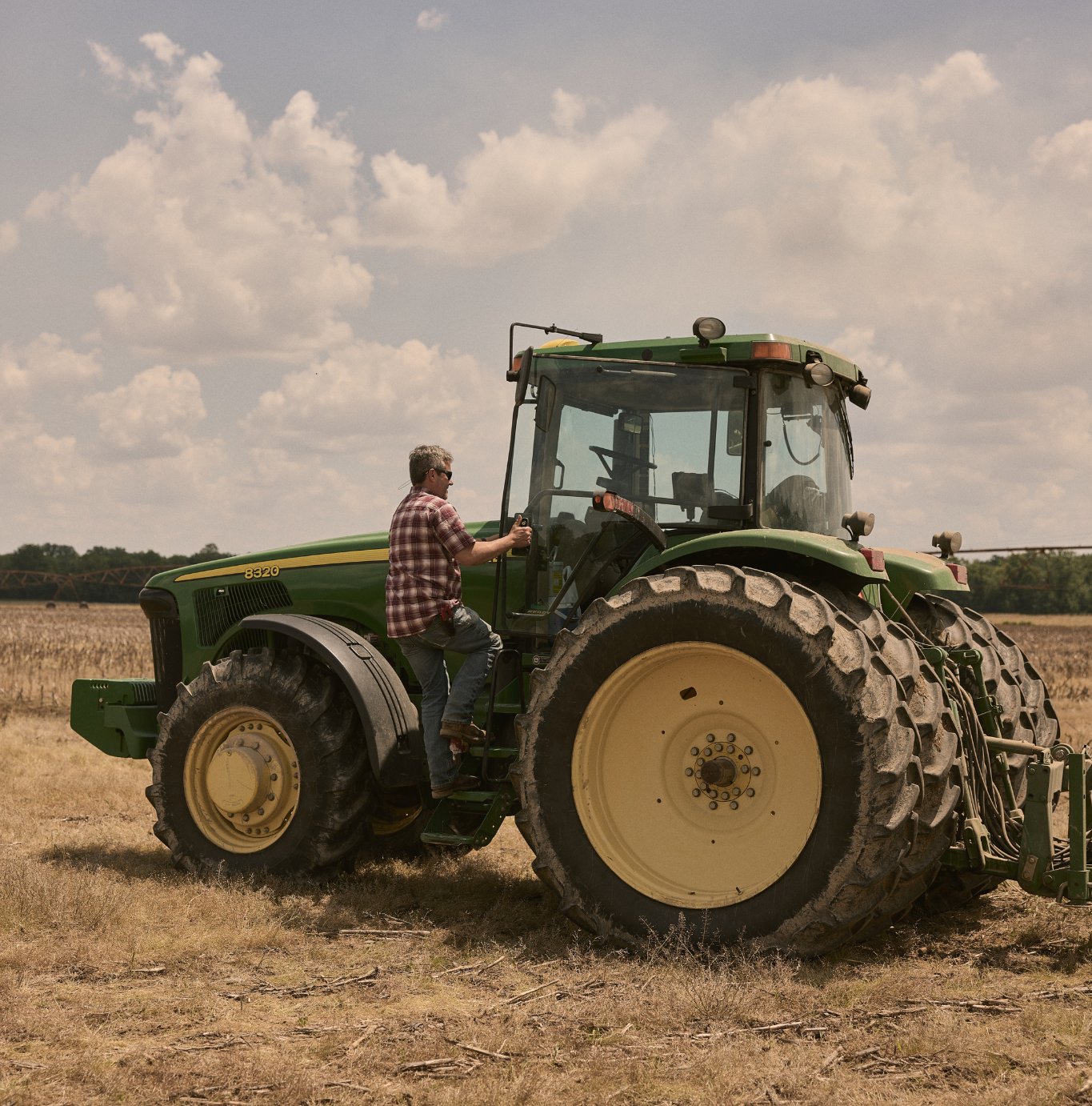The agriculture industry is facing a multitude of challenges, including climate change, water scarcity, and market volatility. Inflation has also emerged as a significant concern. Rising costs on inputs such as feed, fertilizers, fuel, and labor, along with higher insurance premiums and inflated equipment prices, can make it difficult for farmers to make a profit. Food inflation, detrimental to both farmers and end consumers, can also exacerbate this trend.
It’s an important topic to understand because of the potential and significant impacts on the future of the industry and your operation.
“There’s no doubt this is a difficult time, with the uncertainty of the new administration and the rhetoric of trade and tariffs,” says Stephen Nicholson, Global Sector Strategist – Grains & Oilseeds, Rabobank.
So what’s a farmer to do? Analysts say you do have options. We’ve put together five top areas that deserve serious consideration as you future-proof your farm through this uncertain economic cycle.
Budget
Start with a hard look at your budget, either reviewing or establishing a good, thorough budget, says Mike Gunderson, Chief Credit Officer, Farm Credit Illinois. Categorize it by yields, expenses, inputs, and more. Aim to create one budget per acre and another per bushel.
“There are lots of resources to start from, such as the University of Illinois,” he says. “You’ll have to customize it and make it specific to your farm, but it is much better than starting blank.”
Land and Rents
One area where advisers definitely see an opportunity to pull back is land buying and rents. If you’re buying land, “you’re going to have to be a hard negotiator,” says Nicholson. “You have to be willing to walk away if it doesn’t pencil. And know that the one who doesn’t walk away probably either won’t be farming that land or won’t be in business a year from now.”
For many farmers, cash rents have increased along with input and equipment prices. Now is the time to revisit the rent conversation with your landlord. “That can be a good place to rethink,” says Gunderson. “Don’t be afraid to negotiate and have the hard conversations.”
Equipment
Another spot to rethink: Is your equipment fleet rightsized? Are you running the right size and capacity of equipment for your operation today? Did you upgrade and expand during high commodity prices, and could you downsize again without sacrificing efficiency?
“Are you sized properly per acre?” asks Gunderson. “Could you resize or right-size and still get the crop out effectively and efficiently?”
Inputs
Fertilizer and chemicals are the biggest variable expenses for farms. It might be time to rethink how they integrate into your production strategies.
“Reevaluate the application of fungicide and the payoff, for example,” suggests Gunderson. “Is your soil health good? Can you adjust the amounts?”
Likewise, nitrogen application could be a place to adjust. If you’re split-applying, could you consider a single application? Or could you sidedress some but not all acreage? Your agronomist and your retailer can be great resources to help assess soil fertility and adjust strategy accordingly.
Diversification
Consider seeking out new and different markets for soybean production. “Specialty soybeans are where you need to focus right now,” says Nicholson. “Look at beans like high oleic beans or non-GMO beans for food and feed, where you’re likely to get a premium.”
Organic beans could also present opportunities, though Nicholson typically recommends beginning that venture during an upswing. “That’s a three-year process,” he says. “Ideally, you need working capital, and you need a cushion as you work through the process. But I do still have a lot of people looking into it now.”
Carbon Sequestration
Climate change and the focus on carbon intensity create new focus and new pressure, but also new opportunities.
“We see crops being paid on more carbon sequestration,” says Nicholson. “Grain companies and food companies are looking for low carbon-intensity crops both to use and to market with.”
Strategies to explore include biodiversity, cover crops, less tillage, better soil health, crop rotations, and biologicals.
Whether you earn a carbon payment or a premium for the carbon intensity of your crop, it’s an option worth exploring. “We’ve seen several grain companies and processors begin to focus on this opportunity,” he says.
Renewals
From a financial standpoint, many operations are entering into the renewal period for their financing. This is the time for frank conversations with your lender.
“Ask key questions: How do you spread out financing? Your lender may say they can give you the credit line you have now and more. How do you deal with the financing size you have?” says Nicholson.
Another suggestion, he says, is considering financing from input providers such as your seed and fertilizer suppliers. “They tend to have lower interest rates,” he explains. “Their end goal is to sell product; they aren’t like a bank.”
Quick, Decisive Marketing
The markets are in uncertain times because of everything around them in the world. That means farmers must be ready with a market strategy and target.
“You have to be willing to pull the trigger when there’s an opportunity,” says Nicholson. “Identify a target number and put your order in ahead of time at the elevator—it forces your hand to figure out where you need to be, and it pulls the trigger. It takes some of the emotion out of marketing.”
What You Can’t Control
Uncertainty is the name of the game with the new administration, analysts say. Among the potential policies on the table, deregulation is a major focus, according to Nicholson.
“There is a reason for regulations, and deregulating can have large, unintended consequences,” he explains. “Look at when we deregulated airlines: Yes, we had lower prices, but now we’re also down to only four airlines.” Rather than deregulating, he believes we should emphasize making processes smoother and having better outcomes.
Logistics might also impact the farm market, he says. The Suez Canal’s current safety issues make costs higher, which depresses commodity prices and means farmers ultimately incur more costs to get products to market.
And though we might not see a large increase in prices for inputs and machinery, projections don’t indicate they will decrease either. “However, we could see more discounting and better financing opportunities,” Nicholson says. “That’s something to watch for.”
Certainly, the Federal Reserve cutting 25 basis points in late 2024 should help in 2025. “I’m optimistic that the activities of the Fed in 2024 will help in 2025,” says Gunderson. “That the Fed decreased rates again says they feel inflation is in a good place.”
Still, the Fed, even while lowering rates, signaled fewer rate decreases in 2025. Analysts agree that we’re unlikely to see significantly lower interest rates in 2025, particularly with the policies on the table.
“Illinois is positioned well. You have a lot of crushing facilities and are not totally reliant on soybean exports to China should that export business be disrupted,” says Nicholson. “While the Illinois River is important to the soybean export trade, you have rail out of Chicago, which is still sending quite a few beans to the edamame market in Asia.”
Bottom line: If Illinois farmers are proactive and strategize with the long term in mind, incorporate new tactics, and implement careful analysis, they can be successful even during this economic cycle.

Illinois farmers are well-positioned to withstand today’s uncertain markets, and focusing on future-proofing their
operations will be essential for long-term success.
Recent Articles
TikTok sensation Jackson Laux, age 9, partners with John Deere to inspire agriculture's future.
By IL Field & Bean Team

